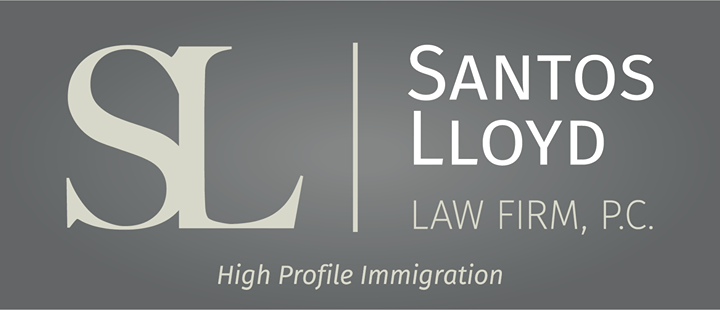How to get an EB-3 Visa? Or What is an EB-3 Visa?
Eduardo Mattos • February 10, 2023
There are several types of visas that allow you to come to the United States and work. Employment-based visas will give you the opportunity to live and work in the U.S. Your education, skills, and experience are some of the things used to determine who is eligible for an employment-based visa. One “EB” visa many people qualify for is an EB-3 visa.
The EB-3 Visa is an employment-based visa that will give you a green card, therefore, the ability to live and work in the United States permanently. There are three distinct EB-3 categories, all of them needing to go through the labor certification process, and a permanent, full-time job offer is required. The three categories are:
EB-3 Skilled Worker - You must prove you have at least two years of job experience or training and perform work for which qualified workers are not available in the U.S.
EB-3 Professional - You must prove that you have a U.S. bachelor’s degree or an equivalent degree in the field of work and must perform work for which qualified workers are not available in the U.S.
EB-3 Unskilled Worker - You must prove capable of performing unskilled labor that is not temporary (or seasonal), for which qualified workers are not available in the U.S.
As indicated, you will need a full-time job offer, and your employer will have to get a PERM/Labor Certification from the U.S. Department of Labor. After being approved on this first step, which typically takes around one year, the employers must file Form I-140 with the USCIS, which takes, on average, six months.
Finally, when the USCIS approves the I-140, you, the foreign national, can file for an immigrant visa or adjustment of status and get your green card, which will take another six months, totaling an average of two years for the completion of an EB-3 process.
If you have any questions, please schedule a consultation with one of our expert attorneys, and we will be happy to assist you.
This blog is not intended to be legal advice and nothing here should be construed as establishing an attorney client relationship. Please schedule a consultation with an immigration attorney before acting on any information read here.
Similar Posts

As an immigration law firm, we regularly assist highly skilled professionals working in the U.S. on temporary work visas such as H-1B who are seeking a path to permanent residency. For many of these individuals, the EB-2 and EB-3 employment-based green card categories are the most pursued—and frequently misunderstood—routes . While both are viable pathways to permanent residency, they differ in meaningful ways that can significantly impact the timing, eligibility, and overall strategy of your case. The EB-2 category is intended for individuals who either hold an advanced degree or demonstrate exceptional ability in their field . Most applicants qualify by having a master’s degree (or higher), or a bachelor’s degree accompanied by at least five years of progressive experience in their profession. There is also a subcategory within EB-2 known as the National Interest Waiver (NIW), which allows qualified individuals to self-petition without employer sponsorship if their work substantially benefits the United States. This route is especially relevant for researchers, entrepreneurs, and professionals in high national interest or mission-critical fields. In contrast, the EB-3 category includes professionals with a bachelor’s degree as well as skilled workers with at least two years of training or experience . While the educational threshold for EB-3 may appear less rigorous, the process itself is equally structured. One key distinction between EB-2 and EB-3 lies in the requirements of the job being offered, not just the applicant’s own credentials. For example, if a position requires only a bachelor’s degree, even a highly qualified candidate with a master’s degree may still fall under EB-3. Regardless of which category applies, most employment-based green card cases begin with the PERM labor certification process . This is a formal procedure overseen by the U.S. Department of Labor, in which the employer must test the labor market and demonstrate that there are no able, willing, qualified, and available U.S. workers for the position. The employer must also agree to pay the prevailing wage as determined by the Department of Labor. This step is both mandatory and highly detail-sensitive; inaccuracies in the job description, recruitment steps, or wage determination can lead to significant delays or even denials. Once PERM certification is approved, the employer files Form I-140 , the Immigrant Petition for Alien Worker. This petition confirms that the employee meets the requirements for the offered position under either EB-2 or EB-3, and that the employer is financially capable of providing the job as described. If the employee’s priority date—which is based on the date the PERM was filed—is current according to the Department of State’s Visa Bulletin, the individual may then file Form I-485 to adjust their status to lawful permanent resident. One of the more nuanced aspects of this process involves understanding how priority dates and visa backlogs affect the timeline. For applicants from countries with high demand, such as India or China, significant delays are common—particularly under EB-2. Paradoxically, there are times when the EB-3 category moves faster, prompting some applicants to file a second I-140 under EB-3 while retaining the original priority date. This strategy can be effective but requires careful legal planning to ensure it’s done correctly. Another strategic factor is portability. If your I-485 application has been pending for at least 180 days and your I-140 has been approved, you may be eligible to change employers under the AC21 portability provisions, so long as the new job is in the same or a similar occupational classification. This flexibility can be critical for employees who experience job changes or promotions during the often lengthy green card process. Ultimately, the choice between EB-2 and EB-3 isn’t about prestige —it’s about aligning your qualifications, the job requirements, and your immigration history with current legal standards and market conditions. The right strategy depends not only on your education and experience, but also on your long-term career goals and country of origin. At our firm, we work closely with both employers and employees to develop individualized immigration strategies that streamline the process and avoid unnecessary setbacks. Whether you're a corporate professional evaluating your green card options or an employer preparing to sponsor a key team member, we offer the insight and experience to move your case forward with confidence.

Once you have connected with a college program, have been admitted to the school, and deemed eligible to compete athletically, you will need to secure an F-1 student visa in order to actually attend your new college and begin your time as a student athlete. The first step in the visa process is to receive your Form I-2

For many talented athletes around the world, U.S. college athletics represent a remarkable opportunity to combine elite athletic competition with higher education. In sports such as basketball, soccer, track and field, and tennis, among others, hundreds of colleges and universities across the United States offer struct

Under the new regulation, if a person filed or files Form I-589, Application for Asylum and for Withholding of Removal after October 1, 2024, and the application remains pending with USCIS for 365 days, the applicant must pay an Annual Asylum Fee (AAF) on the one-year anniversary of his or her filing date.




